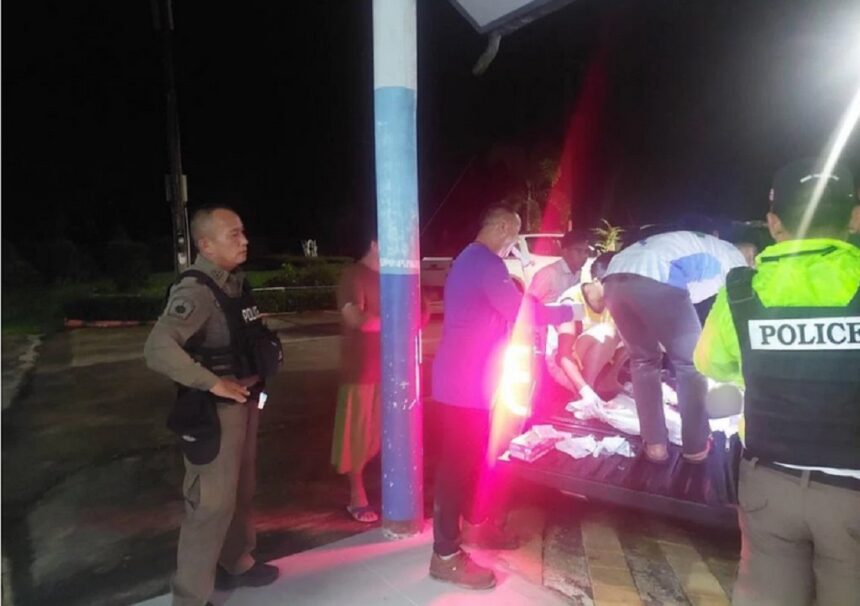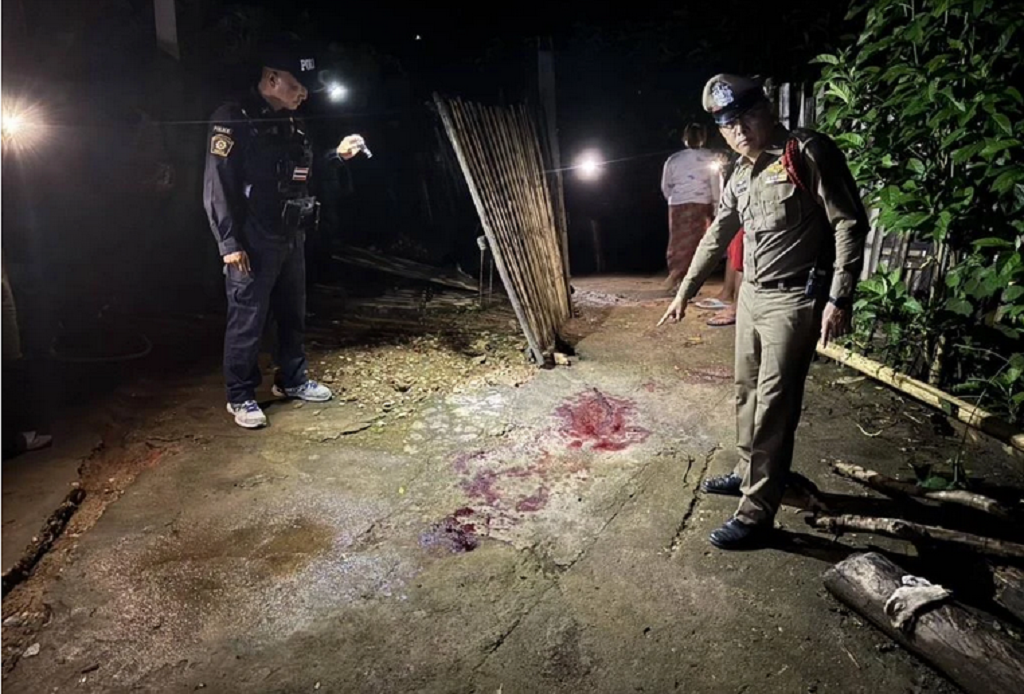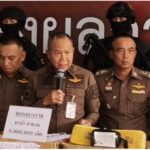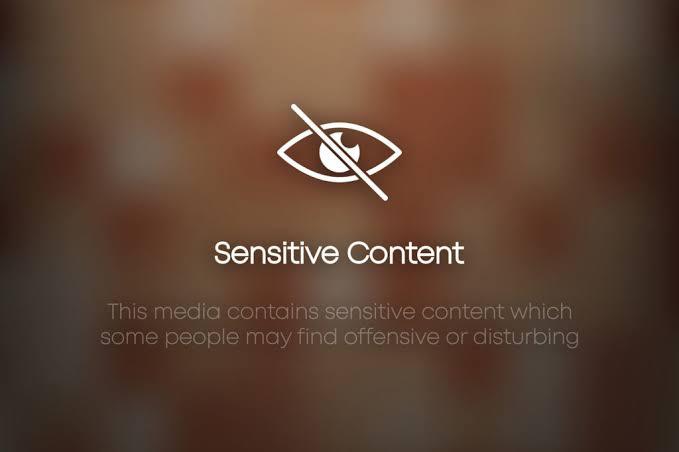CHIANG RAI – A shocking incident in Mae Chan, Chiang Rai, has left a community in mourning, after a 25-year-old man shot and killed his stepfather in a drug-induced rage.
According to the police, they received an emergency call from Santi Suk Village, Pa Tung sub-district, in the early hours of Monday morning.
When officers arrived, they found a pool of blood outside a home and learned that the victim, identified as Mr. Ai Lung, 55, had been taken to Mae Chan Hospital. Sadly, he passed away soon after due to severe neck wounds caused by a machete.
Police quickly opened an investigation. Relatives and neighbours told police that the suspect was likely Mr. Ekachai, 25, the victim’s stepson.
According to those close to the family, Ekachai had a history of drug use and erratic behaviour. They believed his drug habit played a role in the tragedy. He did not have a job and was known for violent outbursts.
After committing the attack with a machete, Ekachai fled on foot. Officers searched the area through the night. About two hours later, they found him walking beside a road in the village and took him into custody without incident.
Ekachai later admitted to hacking his stepfather with a machete during police questioning.
Officers plan to bring Ekachai to reenact the events as part of the investigation process. He faces charges of intentional murder. The case has shaken residents, highlighting ongoing concerns about drug abuse in the area.
Chiang Rai, a province in northern Thailand, faces significant challenges with drug addiction, primarily driven by its proximity to the Golden Triangle, a major hub for illicit drug production and trafficking.
The region’s porous borders with Myanmar and Laos facilitate the smuggling of drugs like methamphetamine (yaba), heroin, and, increasingly, synthetic opioids such as fentanyl.
Methamphetamine, known locally as yaba (meaning “crazy drug”), is the most commonly abused substance in Chiang Rai. Its low cost and widespread availability make it a significant problem, particularly among youth and marginalized communities.
















